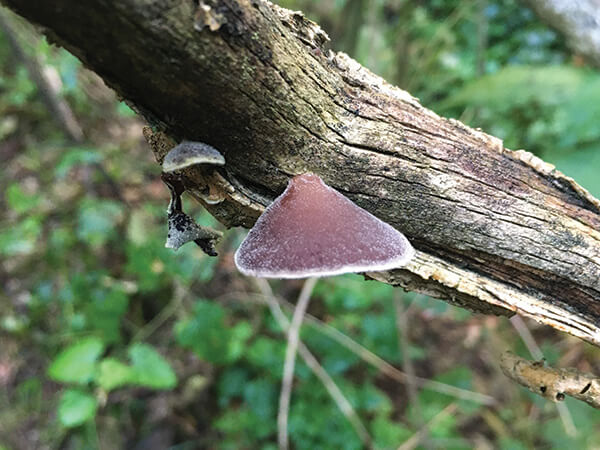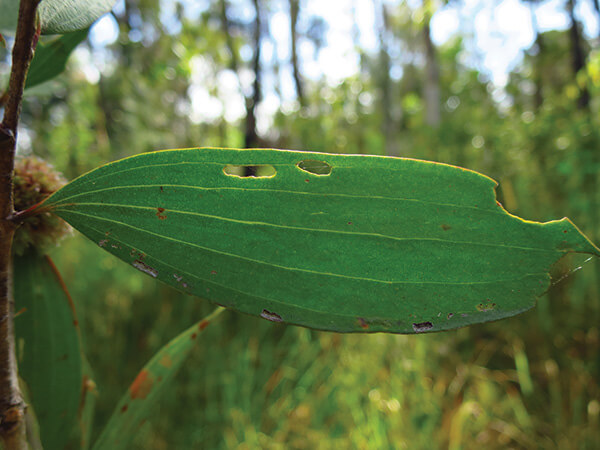First, I am going to indulge in a bit of reminiscing…
I’m twelve years old and on a day walk in the rainforest of Lamington National Park with my Dad and some of his friends. It’s late in the day and the light is starting to fail, I’ve pushed on ahead because they talk too much and walk too slow. Suddenly, the shadows hold all sorts of imagined horrors, the strange calls of birds and rustlings in the heavy undergrowth seem malicious. I turn and run as if every nightmare I had ever dreamed had sprung from the trunks of the strangler figs and ferny undergrowth…
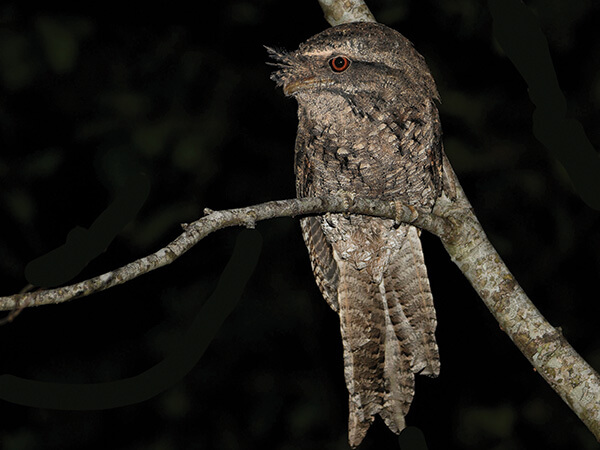
large-mouthed (mulgiformes) birds of this group suckled on goats (capri). Photo by Michael Daley.
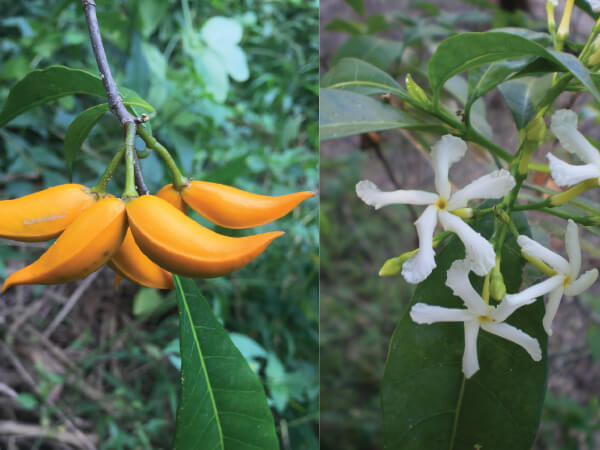
Jump forward to more recent times and I’m on another walk, this time in rainforest of the Blackall Range with a group of committed plant geeks. As we walk the group is sharing their observations of the plants and animals we see and hear, “Check out the size of that Eucalyptus grandis” and “Hey look, Erythrina seeds”. Sometimes just the name of the plant or animal is mumbled as we pass and to a casual eavesdropper it could sound like nonsense, but the reality is that it’s more like a greeting, as if walking down the street in a small town. It’s the equivalent of a “G’day Nick” or “How’s it going Deb” to a familiar face. For me, knowing the names of our wildlife has meant that the wild places that were fearful places full of hostile nature are instead familiar comforting places full of old friends.
A part of my job that gives me great satisfaction is helping people discover the names of the plants, animals and fungi that live around us. However, I find that many people are just interested in the common name and I can appreciate why when so many names seem impossible to pronounce, remember or even spell. You could argue that knowing the scientific name for a Marbled Frogmouth makes no difference to either the bird or the human but I would like to try to convince you that it’s worth learning not just common names, but the scientific and local Indigenous names (where known) as well.
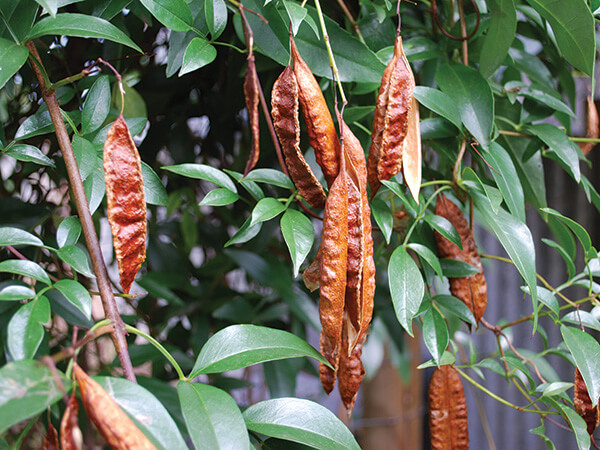
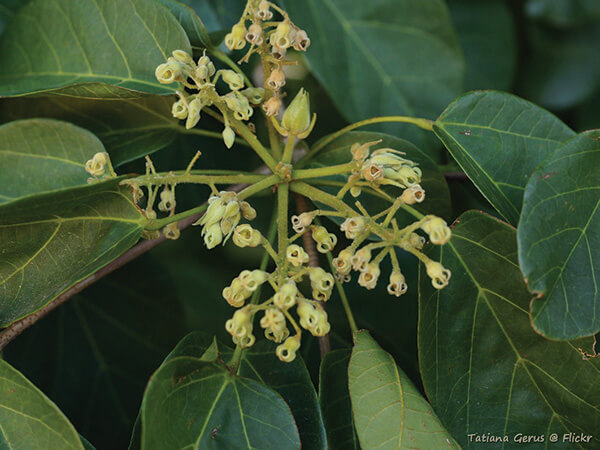
There are a few techniques you can employ to help you remember scientific names. One of the easiest memory aides is to use rhyme or nonsense, for example the delicate rainforest grass Oplismenus becomes ‘hopeless menace’ despite being anything but. Or there is my personal favourite, the tavern in the mountains where pandas serve daiquiris – Tabernaemontana pandacaqui. A variation on this that has recently been shared with me by a landholder is the use of song lyrics, as in Psycho-tria daph-noi-des sung to the tune of Psychokiller by Talking Heads.
While this may help you remember the name there is a much richer world of understanding once you start learning what the names mean. Many names are descriptive of the organism and so are a great assistance in identification. They often use Latinised terms that may already be familiar to you like folia which refers to the leaves of a plant while others, like xylon, which means wood, may not be so familiar. You will find that the more you use them the more familiar they become and you will notice them used in other names. I now feel very fortunate to have had a primary school teacher who thought that Latin should still be taught in school for the familiarity that I now feel for the Latin and Ancient Greek that makes up many of the scientific names.
Scientific names also commonly make reference to places, people, mythology, and languages. If you have the time and an inquiring mind a little bit of research on the internet or with a reference book can lead you to some remarkable places. For example, the common local native ginger belongs to the genus Alpinia, which was named for Prospero Alpino (1553-1617), a Venetian physician and botanist, by Carolus Linnaeus. Alpino’s writings include the oldest scientific descriptions of coffee, banana, date palm pollination and the sexual differences in plants. Linnaeus (1707-1778), a Swedish naturalist and physician used these observations, along with many others, in his development of a binomial (two-name) classification system for naming all living creatures. This is the same system that we still use today.
Another useful technique, if you know the name, is to use it whenever you notice the organism. Use all your senses (except maybe taste) to explore different aspects of the plant, animal or fungi and then whenever you notice it, say its name. If in public you may want to do this quietly or in your head otherwise you will start to get funny looks.
Finally, try building a story around it or weave it into an experience, that way the organism becomes part of your personal narrative and much easier to remember.
I’ll finish with a story of yet another bushwalk, this one with my kids. It has been a long walk and there is still quite a way to go, so in an effort to distract from tired legs I point out a dead branch sprouting a myriad of ear-shaped fungus. “Touch them and tell me what they feel like”, I say.
“Ears! What are they called Dad?”
“Auricularia cornea, which means ear-like with a tough covering”, I reply.
Tired legs forgotten, the rest of the walk was taken up with inventing Latin names for things. My kids still remember the name of the cloud ear fungus.
The other aspect of scientific names that many people find difficult is the pronunciation. There are entire books written on the subject and there will be exceptions but here’s some simple rules:
- ae and oe are treated as the letter E either pronounced long as in me (Banksia aemula) or short as in met (Haemodorum)
- ch is pronounced as a hard K (Christella)
- ii is pronounced ee-eye (Acmena smithii)
- most vowels and “y” are pronounced short (Polygala)
- if it incorporates a persons name, pronounce the name and then the suffix. Guioa is named for the Spanish botanical artist Jose Guio so therefore is pronounced ghee-Oh-ah
Don’t fret if you pronounce things differently, if you have been understood then you have communicated effectively.
Header image: Commelina lanceolata – The name Commelina was given to this group of plants by Linnaeus in honour of two Dutch botanists, Jan Commelin and his nephew Caspar Commelin. The plant used by Linnaeus to first describe this genus was Commelina communis, which has two large showy petals while the third is inconspicuous. Apparently, Linnaeus wrote, “Commelina has flowers with three petals, two of which are showy, while the third is not conspicuous, from the two botanists named Commelin, for the third died before accomplishing anything in botany.” In a back-handed compliment to the Commelin family, the inconspicuous third petal referred to Jan Commelin’s brother who was a bookseller and newspaper publisher.
References & Further Reading
Lederer RJ & Burr C (2014) Latin for Birdwatchers: Over 3,000 scientific bird names explored and explained. Timber Press.
Pavord A (2005) The Naming of Names: The Search for Order in the World of Plants. Bloomsbury.
Perrin D (1988) Dictionary of botanical names: Australian plant names, meaning, derivation & application. Redcliffe Education Centre.
www.australiangeographic.com.au
www.curioustaxonomy.net
www.noosasnativeplants.com.au
Article and uncredited photos by Alan Wynn
Land for Wildlife Officer
Sunshine Coast Council

